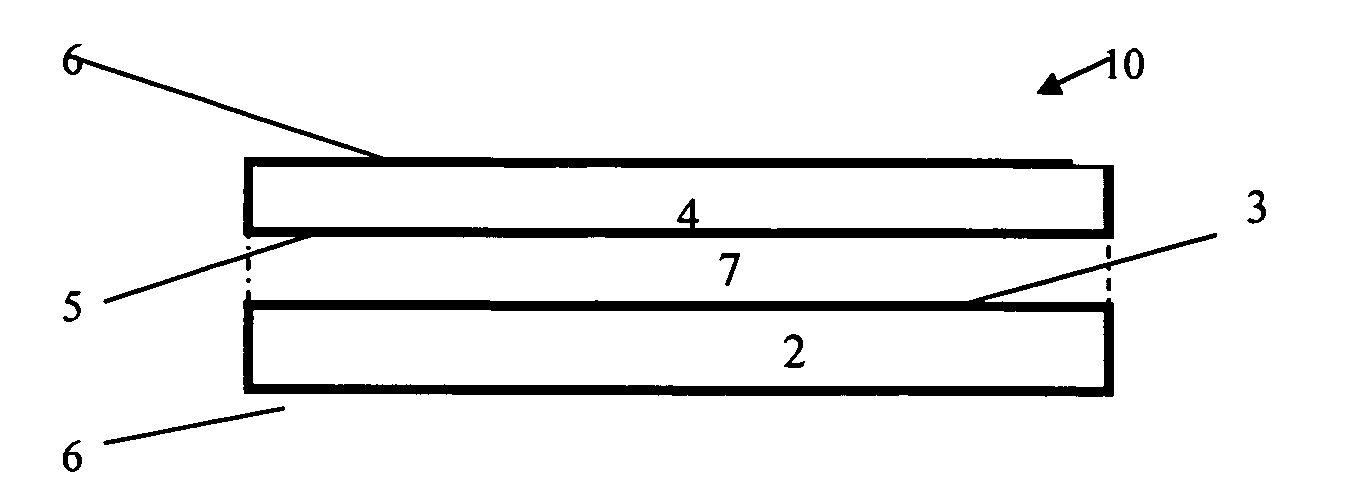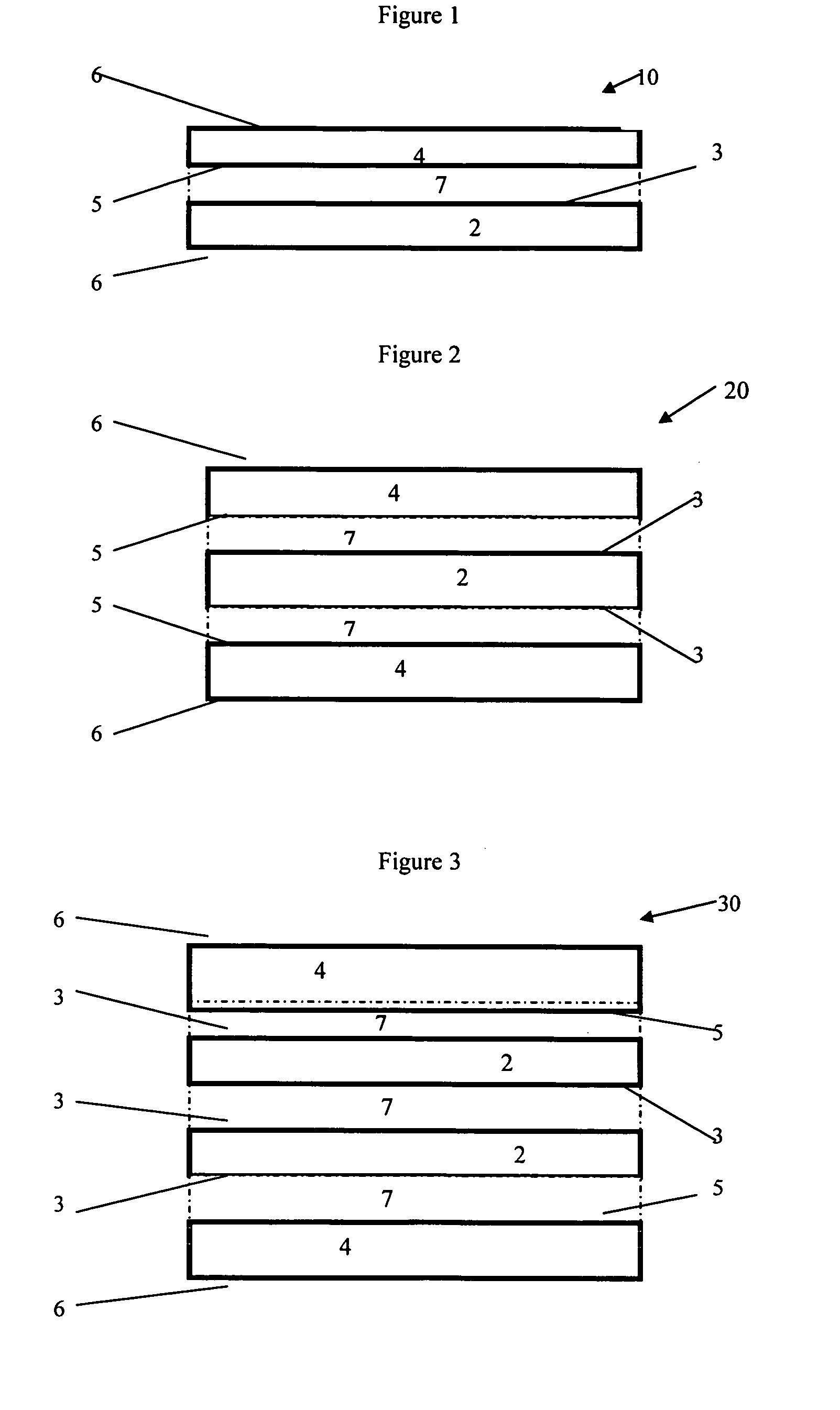Optical distortion removal
a technology of optical distortion and removal, applied in the field of optical distortion removal, can solve the problems of affecting the optical properties of the glass, the manufacture of glass, and the influence of the surface irregularities and ultimately optical properties, so as to reduce optical distortion, eliminate the need for polishing, and increase the strength of the article
- Summary
- Abstract
- Description
- Claims
- Application Information
AI Technical Summary
Benefits of technology
Problems solved by technology
Method used
Image
Examples
example 2
[0034]Transparent armor for use as windows in armored vehicles may comprise multiple layers of float glass laminated together by an autoclave process. Each layer of float glass has a distortion-free surface. The transparent armor comprises a laminate of multiple layers of float glass. The armor may be more than four inches thick and weigh more than 50 pounds per square foot. Glass-ceramic windows with similar armor properties are typically more than thirty percent lighter. Float or fusion processes do not lend themselves to producing a thick, glass-ceramic sheet, so a transparent glass-ceramic sheet is produced by the rolled glass process. Prior art glass-ceramic windows required expensive, time-consuming polishing that ground away material and weakened the glass-ceramic.
[0035]A glass-ceramic sheet was produced by the rolled glass process. The rollers were polished to a nominally smooth finish, but the resulting glass-ceramic sheet had visibly textured surfaces and unacceptable opti...
PUM
| Property | Measurement | Unit |
|---|---|---|
| roughness | aaaaa | aaaaa |
| thickness | aaaaa | aaaaa |
| thicknesses | aaaaa | aaaaa |
Abstract
Description
Claims
Application Information
 Login to View More
Login to View More - R&D
- Intellectual Property
- Life Sciences
- Materials
- Tech Scout
- Unparalleled Data Quality
- Higher Quality Content
- 60% Fewer Hallucinations
Browse by: Latest US Patents, China's latest patents, Technical Efficacy Thesaurus, Application Domain, Technology Topic, Popular Technical Reports.
© 2025 PatSnap. All rights reserved.Legal|Privacy policy|Modern Slavery Act Transparency Statement|Sitemap|About US| Contact US: help@patsnap.com


